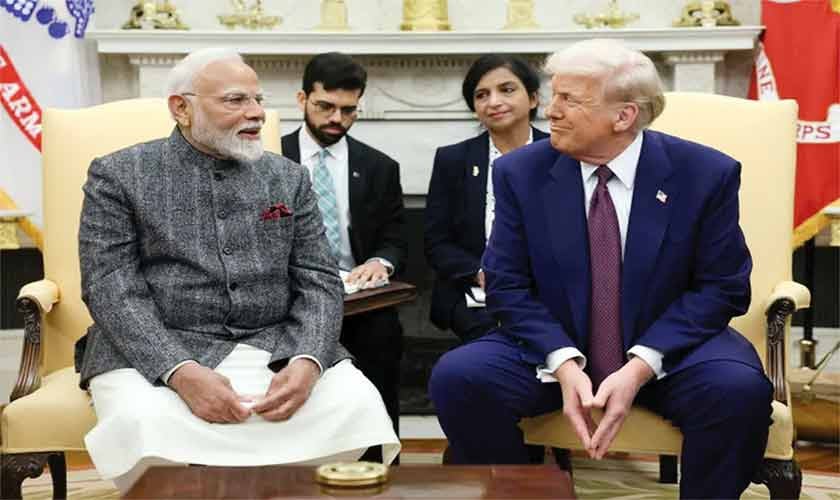TARIFFS
On August 6, 2025, US President Donald Trump, signed an Executive Order imposing an additional 25 per cent ad valorem tariff on all Indian imports into the US, raising the overall tariffs to 50 per cent.
The White House’s official justification was India’s ongoing purchases of, both direct and indirect, Russian oil, which Washington argues undermines US-led efforts to isolate Moscow over its conflict with Ukraine.
While official justification has targeted the oil trade, the move seems driven by a broader, more punitive aim of pressuring India. The real US concern is not just India’s Russian oil imports, but its growing audacity to pursue foreign policy choices, especially those that challenge US dominance and favour a multipolar world. This indicates that India’s ‘multi-alignment’ strategy is now facing a major stress test.
While it seems ideal to keep many friends and not put all eggs in one basket, the way India has pursued this strategy in today’s sharply divided geopolitical climate has been difficult to sustain by New Delhi. Trump’s recent tariffs and threat of more tariffs as well as Indian response is more so a proof of such an environment.
So far, New Delhi has avoided direct countermeasures like reciprocal tariffs. Rather, soon after the additional tariffs were imposed, India rallied the support of countries equally targeted by Washington’s trade policies. This has brought renewed diplomatic energy into forums like the BRICS and the SCO, both of which offer platforms for collective solidarity and resistance to the US-led world order.
BRICS for instance is seeing a new momentum. Brazilian President Luiz Inacio Lula da Silva proposed a BRICS-level discussion to counter Trump’s tariffs. This is because both Brazil and India face 50 per cent tariffs from Washington. President Lula and PM Modi’s phone call, as well as the confirmed state level visit of President Lula to India in early 2026, indicate convergence on subjects beyond trade. This hints towards BRICS potential transformation from an economic bloc to a potential political counterweight to the West.
Analysts have warned that penalising the ‘least anti-US’ BRICS member could prompt India to be even less cautious in its engagement with the bloc and advancing its de-dollarisation agenda. This may also push India closer to China despite longstanding Sino-Indian tensions, they argue.
In light of this, Indian Prime Minister Narendra Modi’s first visit to China after seven years to attend the SCO meeting is widely read as a signal to Washington’s pressure and India’s impudence to its strategic partner. China too has endorsed India’s position claiming that “India’s sovereignty is non-negotiable” and its foreign policy choices cannot be “manipulated” by other countries, no matter how significant their own ties with India are.
The memory of tariffs and threats may fade, but India’s rallying of the anti-US bloc might continue to prove it to be an unreliable partner
New Delhi and Beijing’s kindling might give a temporary tactical healing to India but it remains unlikely that India and China can find common ground at the SCO forum. India remains opposed to China’s key regional interests such as the BRI, CPEC. This indicates that inching towards China will not cover the foreign policy ditches created due to India’s ‘multi-alignment policy’.
Lastly, despite US strict measures, India is going about business-as-usual with Russia. Amidst all the chaos, Indian National Security Adviser Ajit Doval met with the Russian President Vladimir Putin. External Affairs Minister Jaishankar’s upcoming Moscow visit also underlines New Delhi’s determination to disregard the US measures and reinforced ties with Russia.
Rather, the two sides reportedly are engaged in talks on Russian oil, S-400 missile defence system, and the upcoming Modi-Putin Summit. This indicates a growing Indo-Russia convergence. While Russia can provide political cover and energy resources, it cannot match the US in terms of market access, advanced technology or global clout. This would make it challenging for India to juggling the ties between the US and Russia, and ignore Washington’s measures that easily.
This is because both Washington and New Delhi are relevant in each other’s capitals due to Washington’s assigned role for India as a counterweight to China, and India’s need for advanced defence technologies from the US and the Western partners. However, the recent episode could leave lasting scars and feed into US scepticism about New Delhi as a reliable partner, impacting future deals and negotiations.
For Washington, mistrust towards India deepened after the foiled plot to assassinate a Sikh separatist leader on US soil was linked to Indian operatives. More recently, New Delhi’s constant refusal of Trump’s role in the ceasefire in the India-Pakistan May 2025 conflict has agitated President Trump. For India, President Trump’s offer to resolve the Jammu & Kashmir dispute and the revival of US-Pakistan relations has had an unsettling effect in New Delhi as this rendered Islamabad strategically relevant in Washington again.
History suggests that India and the US have weathered such storms but this one could be different due to India’s growing defiance and inflexibility. While it remains unsure if India can garner enough support for its agenda at the SCO forum, BRICS could be a potential rally point for India, not because it might offer an alternative to US partnership, but because it provides comparatively more diplomatic leverage due to convergence with Russia and Brazil.
In the near term, the India-US partnership might not collapse due to large stakes but it will operate under another layer of mistrust. The memory of tariffs and threats may fade, but India’s rallying of the anti-US bloc might continue to prove it to be an unreliable partner.
The writer is a research analyst in emerging technologies and international security. She tweets/posts @MaheenShafeeq
